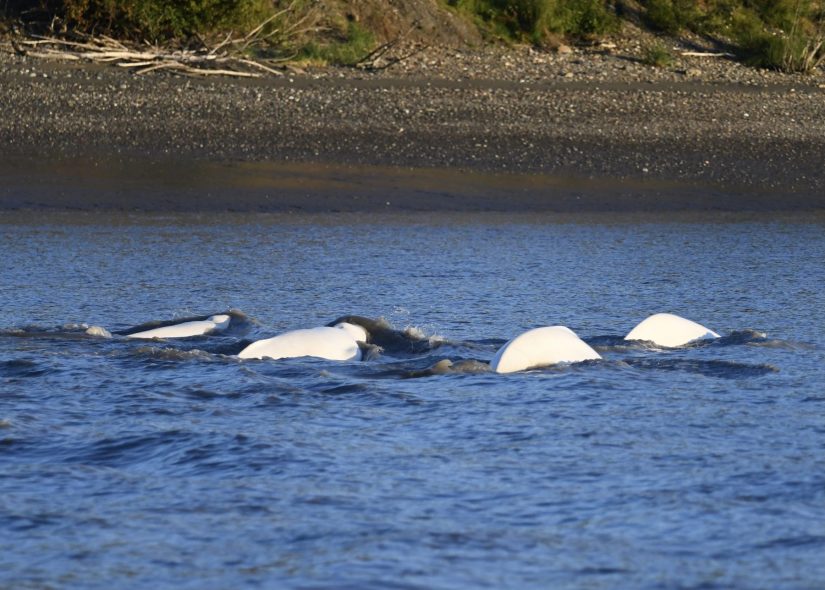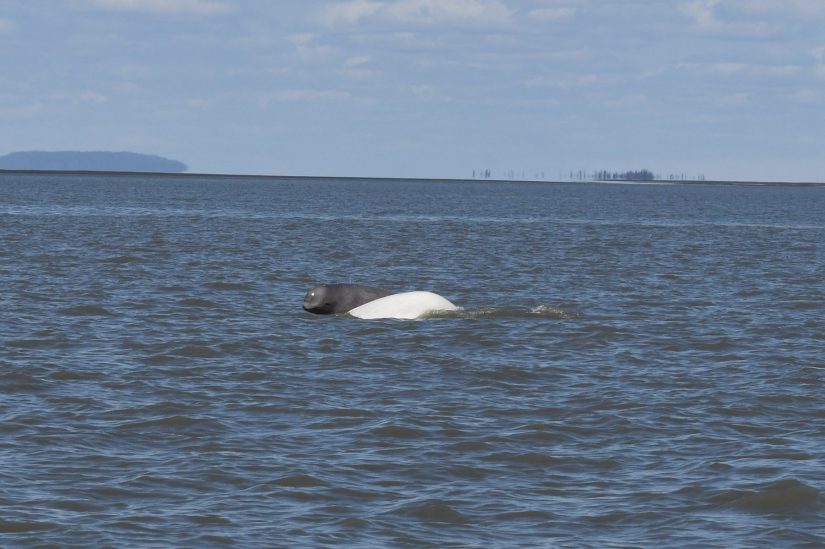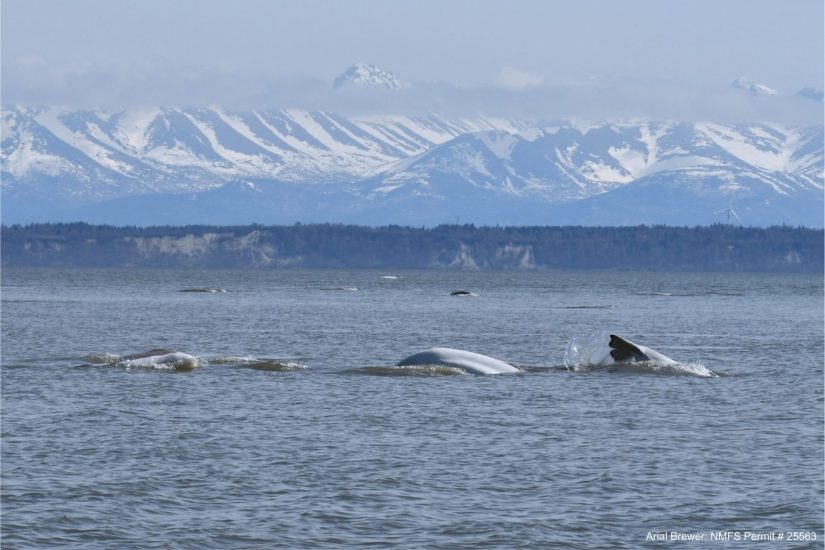Cataloging the canaries of the sea: studying vocal behavior, kinship and microbial transfer in Cook Inlet beluga whales
Known as the canaries of the sea for their highly vocal nature, beluga whales are found across the Arctic and sub-Arctic. There are 21 beluga populations worldwide, with five populations found in Alaska. Of these, the Cook Inlet beluga population is the most endangered, with current estimates hovering around the 300 mark. A highly diverged population, the Cook Inlet belugas are geographically and genetically isolated, remaining in Cook Inlet year-round.
Arial Brewer, a PhD student in the Complex Ecological Systems Lab led by Andrew Berdahl and the Whale and Dolphin Ecology Lab led by Amy Van Vise at SAFS, has been working on this population since pre-grad school at NOAA. “There is still so much unknown about this population, particularly how their social nature affects the transfer of information and the transfer of disease” said Arial.
It has been hypothesized that belugas may have a fission-fusion type of social structure, rather than matrilineal like we see in killer whales. Interested in how information is shared among group members, Arial wanted to explore how sociality affects the vocal behavior and microbial transfer in this endangered population.

In the first two chapters of her PhD, she is diving into acoustics and exploring the vocal repertoire and calling behavior of Cook Inlet belugas. Moving a step beyond this, she has also investigated the impact of anthropogenic noise on the population. Cook Inlet has a large commercial shipping presence, and similarly to how a human conversation would be masked in a loud rock concert, Arial found that beluga whale vocalizations are masked by ship noise.

While exploring the seven most commonly used call types of Cook Inlet belugas, analysis revealed that all of them were completely masked by shipping noise at close distances, and partially masked at further distances. This is a critical issue for a population which heavily relies on acoustic communication for group cohesion and safety in a number of ways, such as communicating movement decisions, mother/calf contact, and information regarding feeding locations and predator presence. Another key issue around anthropogenic noise is that these beluga whales do not migrate and are therefore subjected to this noise year-round. Arial hopes that by opening up conversations around the masking of calls and how impactful it is on the beluga population, it can lead to further research and mitigation efforts for this population.

Now that Arial has described the vocal repertoire and how noise affects these calls, she is moving on to the behavioral aspect. Arial is currently working on a project studying how behavior, calf presence, group size and tidal state are affecting vocal behavior. She hopes that this will lead to more efficient efforts in passive acoustic monitoring. “Currently, we are only able to describe where and when the belugas are with passive acoustic monitoring”, Arial said. “Understanding how various factors shape calling behavior can help us better describe habitat use and more effectively monitor this population”.
This is only the tip of the iceberg in Arial’s work in the Cook Inlet. With her upcoming research focusing on population structure, kinship and epidermal microbiomes, she aims to investigate how sociality and kinship may be affecting disease transfer in Cook Inlet beluga whales.